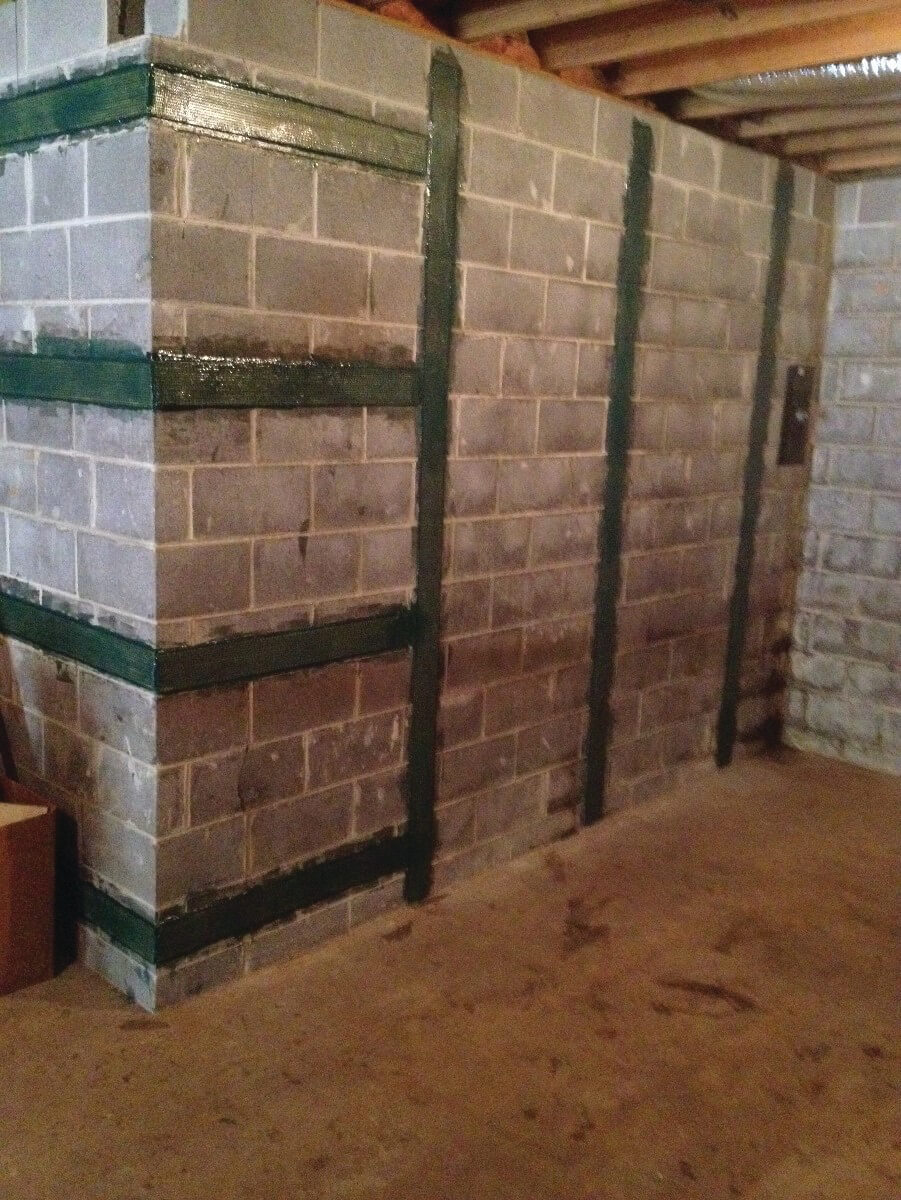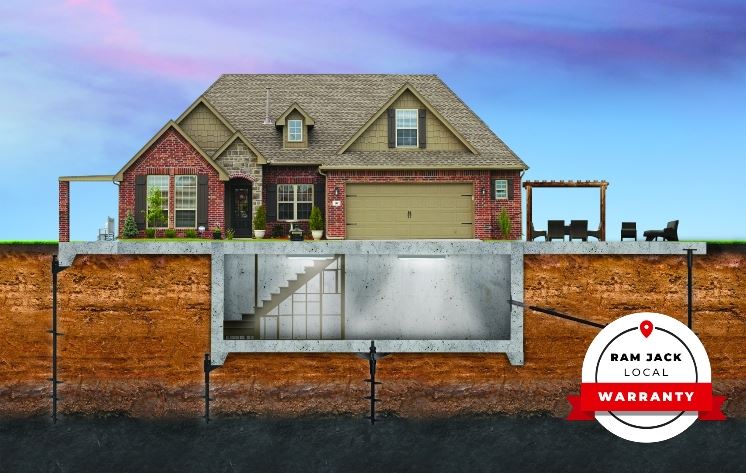Bowed Basement Wall Repair in Wareham
Reinforcement for Basement Walls in Rhode Island & Massachussets
Bowed walls can be caused by different things. Block walls and poured foundation walls can bow from the force of surrounding soil. Pressure from the soil against the wall can change from different factors. This pressure can increase when water swells the clays in the soil and expands.
A block wall will show signs of stair step cracks in the corners of the foundation and usually a long horizontal crack near the center of the wall. This usually indicates that the block wall is bowing in due to the lateral load against it. Sometimes a poured wall will crack and bow due to soil pressure against it. Concrete is very good at compression strength but not so strong with tensile strength. This is why builders will install rebar within concrete walls for basements, foundations. Stabilization is also needed for seawalls suffering from erosion or separation.
Learn more about our repair methods for bowed walls by giving us a call at (508) 232-4676 or schedule an appointment online.
Different Methods for Repairing Bowed Walls
There are several bowed basement wall repair methods to choose from depending on your budget and, also, the severity of the problem. Here is a list of the most common solutions to a bowed wall:
- Carbon Fiber Straps. Installing carbon fiber straps embedded in an epoxy resin can add support. The straps will often run vertically along a block or poured concrete wall.
- Wall Tie Backs. These are helix anchors that are vertically screwed into the earth around the foundation wall. A plate is attached on the inside of the basement wall or crawlspace to help support the bowed wall. If a full recovery is desired we would need to remove the soil from against the outside of the wall. This will allow for the wall to be torqued back to where it once was.
- Brackets & Piles. Some bowed walls are caused by the foundation settling. Such walls may need to have brackets and piles installed to prevent downward movement.
- Removing Groundwater or Trees. Part of the solution to repairing a bowed wall is to deal with the reasons it bowed. Trees too close to the foundation wall should be removed. Groundwater and roof water should be directed away from the foundation, as this additional water can cause the soils to expand more. Freezing of this water can also influence the foundation wall. We recommend that all downspouts be directed at least 10 feet from the foundation wall. The grade of the soil around the home should lead water away from the foundation wall.
What Causes Basement Wall Problems?
Damage, cracks, and inward bowing on basement walls is usually produced from soil pressure. After the soil has soaked up moisture, it expands. This produces increased pressure against a basement wall. As years go by, a continual process of expansion and pressure can eventually cause walls to crack or bow. Our Wareham foundation experts provide basement wall repairs across Rhode Island and Massachusetts.
Other reasons basement walls need repairs include:
- Poor construction job
- Deterioration over time
- Plumbing problems and leaks
- Tree root invasion
What Are Signs That Basement Walls Need Repair?
There are several telltale signs that indicate you need basement structural repairs. Most likely you will notice unevenness in the walls. We have compiled some things to look for if you are concerned your basement walls may need repair.
- You notice "stair step" cracks outlining the brick or concrete blocks
- You see lean in your walls toward the top
- The bottom of the wall appears to be moving inward
- You are seeing diagonal cracks in the wall.
For further assistance, give our basement wall repair company in Wareham a call today at (508) 232-4676.




